Coordination
Earth Science
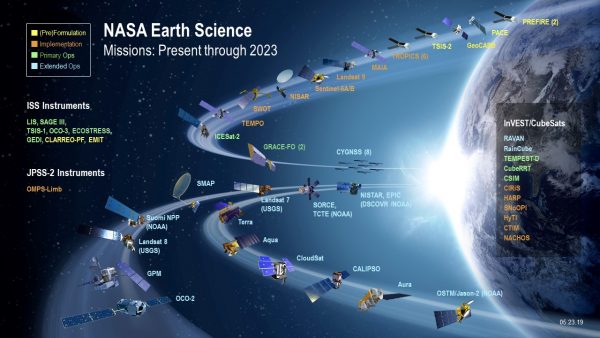
NASA’s Earth Science Division (ESD) missions help us to understand our planet’s interconnected systems, from a global scale down to minute processes. Working in concert with a satellite network of international partners, ESD can measure precipitation around the world, and it can employ its own constellation of small satellites to look into the eye of a hurricane. ESD technology can track dust storms across continents and mosquito habitats across cities.
ESD delivers the technology, expertise and global observations that help us to map the myriad connections between our planet’s vital processes and the effects of ongoing natural and human-caused changes.
Using observations from satellites, instruments on the International Space Station, airplanes, balloons, ships and on land, ESD researchers collect data about the science of our planet’s atmospheric motion and composition; land cover, land use and vegetation; ocean currents, temperatures and upper-ocean life; and ice on land and sea. These data sets, which cover even the most remote areas of Earth, are freely and openly available to anyone.
The four program elements of ESD design the science and technology, launch airborne and space missions, analyze the data and observations, and develop ways to put the information to use for societal benefit. ESD also sponsors research and extends science and technology education to learners of all ages, inspiring the next generation of explorers.
More than collecting the data, however, ESD works with government and commercial partners in the U.S. and internationally to put that unique information to work as we explore our home planet, improve lives and safeguard the future for people all over the world. Earth science research also helps advance space exploration by helping scientists recognize the basic markers for life across the universe.
Heliophysics
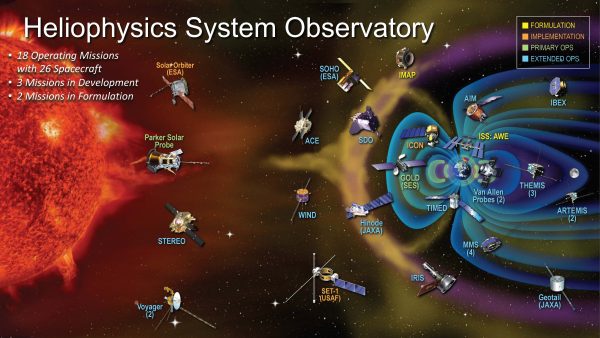
The Science Mission Directorate Heliophysics Division studies the nature of the Sun, and how it influences the very nature of space — and, in turn, the atmospheres of planets and the technology that exists there. Space is not, as is often believed, completely empty; instead, we live in the extended atmosphere of an active star. Our Sun sends out a steady outpouring of particles and energy — the solar wind – as well as a constantly writhing magnetic system. This extensive, dynamic solar atmosphere surrounds the Sun, Earth, the planets, and extends far out into the solar system.
Studying this system not only helps us understand fundamental information about how the universe works, but also helps protect our technology and astronauts in space. NASA seeks knowledge of near-Earth space, because — when extreme — space weather can interfere with our communications, satellites and power grids. The study of the Sun and space can also teach us more about how stars contribute to the habitability of planets throughout the universe.
Mapping out this interconnected system requires a holistic study of the Sun’s influence on space, Earth and other planets. NASA has a fleet of spacecraft strategically placed throughout our heliosphere — from Parker Solar Probe at the Sun observing the very start of the solar wind, to satellites around Earth, to the farthest human-made object, Voyager, which is sending back observations on interstellar space. Each mission is positioned at a critical, well-thought out vantage point to observe and understand the flow of energy and particles throughout the solar system — all helping us untangle the effects of the star we live with.
Astrophysics
In the Science Mission Directorate (SMD), the Astrophysics division studies the universe. The science goals of the SMD Astrophysics Division are breathtaking: we seek to understand the universe and our place in it. We are starting to investigate the very moment of creation of the universe and are close to learning the full history of stars and galaxies. We are discovering how planetary systems form and how environments hospitable for life develop. And we will search for the signature of life on other worlds, perhaps to learn that we are not alone.
Space Technology Mission Directorate
- SBIR/STTR
The SBIR/STTR programs programs provide an opportunity for small, high technology companies and research institutions to participate in government-sponsored research and development (R&D) efforts in key technology areas.
- Early Stage Innovation
- Space Technology Research Institute
- Small Spacecraft Program
Our primary objective for Small Spacecraft Technology is to identify and support the development of new subsystem technologies to enhance or expand the capabilities of small spacecraft, while also supporting flight demonstrations of new technologies, capabilities, and applications for small spacecraft. Small spacecraft can be used as platforms for testing and demonstrating technologies and capabilities that might have applications in spacecraft and systems of any size.
Game Changing Development Program
-
-
- Bulk Metallic Glass
- High Performance Space Computing
- Deep-Space Engine
- Extreme Environment Solar Power
- HEEET
-
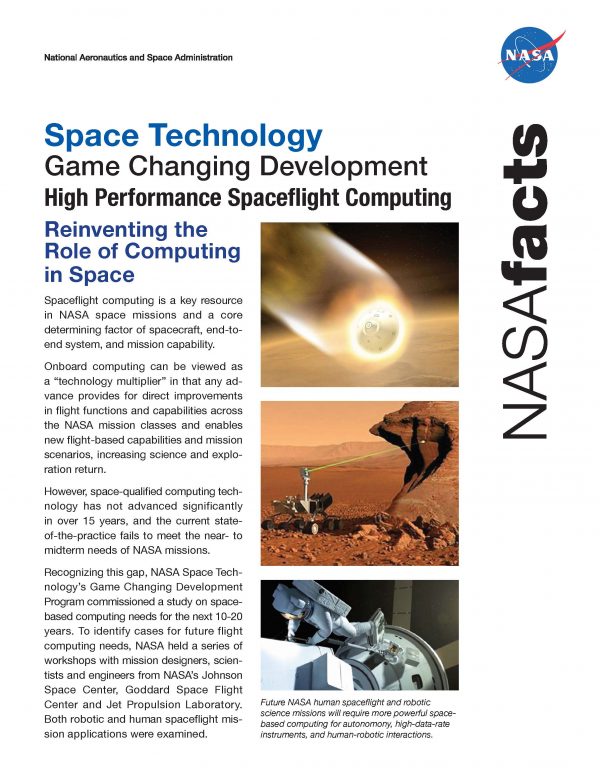 |
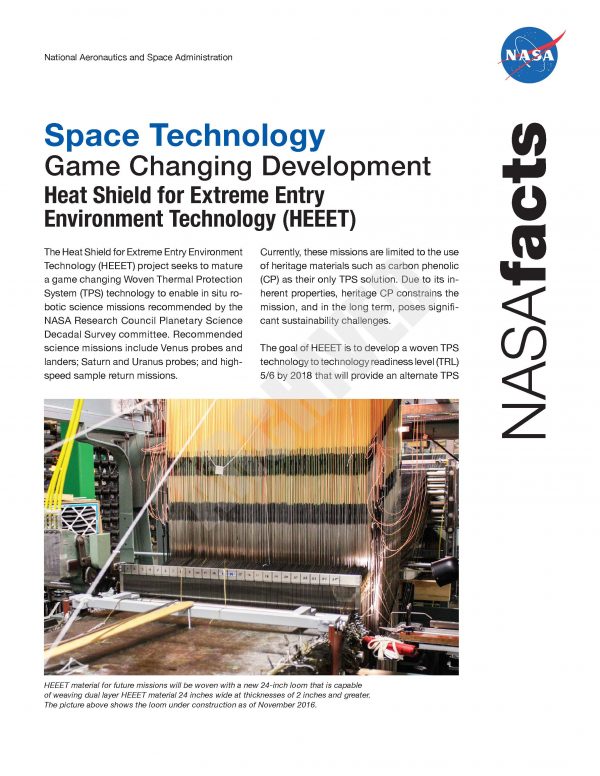 |
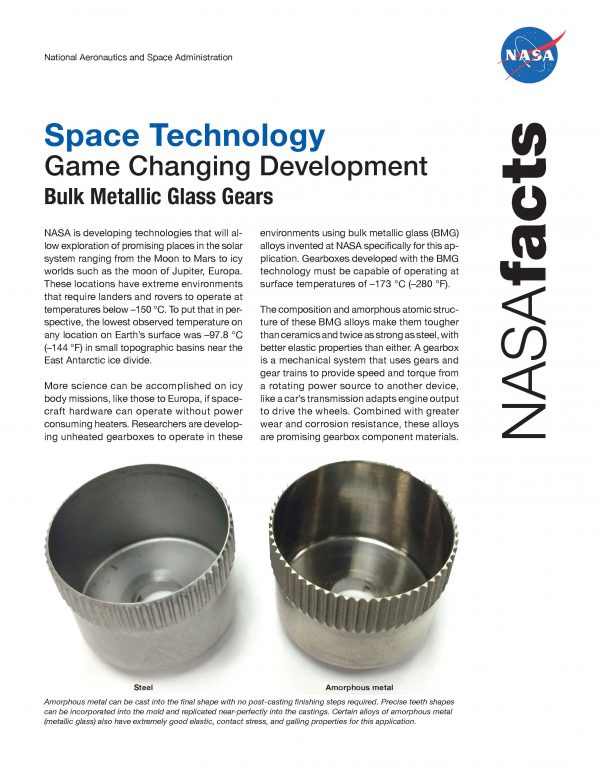 |
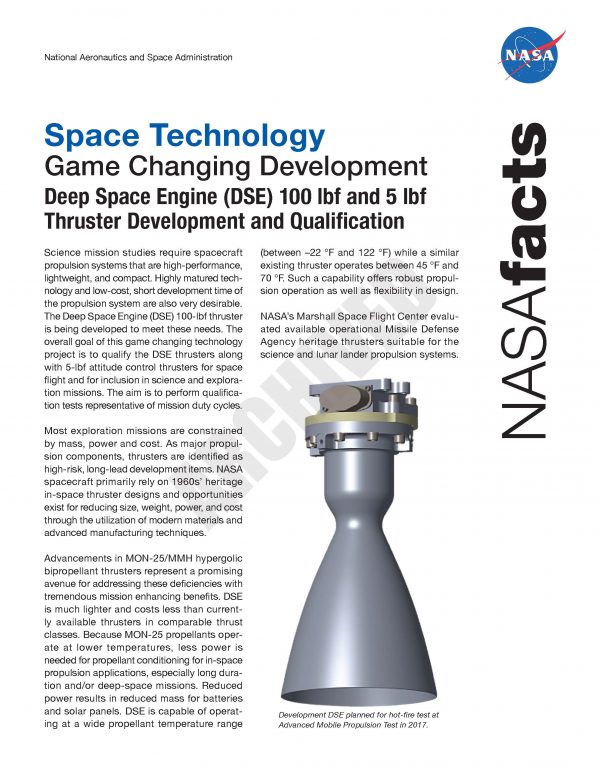 |
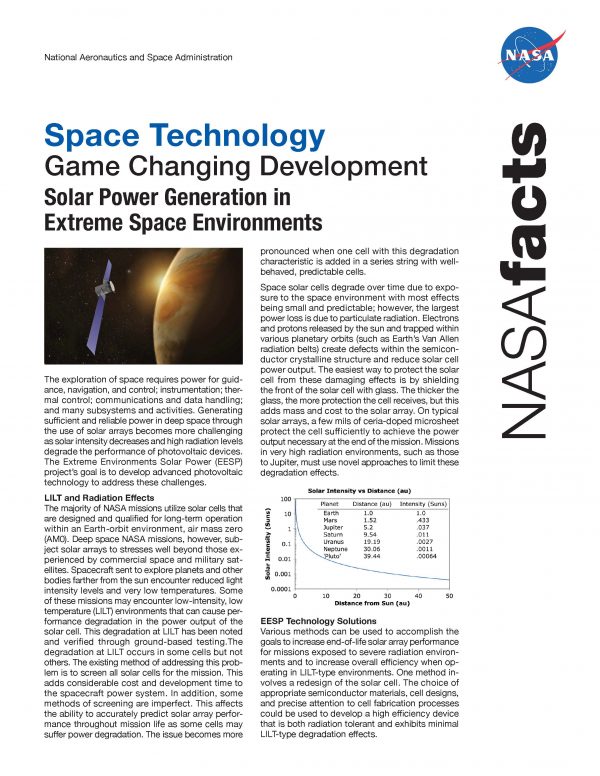 |
Human Exploration and Operations Mission Directorate (HEOMD)
The Human Exploration and Operations (HEO) Mission Directorate provides the Agency with leadership and management of NASA space operations related to human exploration in and beyond low-Earth orbit. HEO also oversees low-level requirements development, policy, and programmatic oversight. The International Space Station, currently orbiting Earth with a crew of six, represents the NASA exploration activities in low-Earth orbit.
Exploration activities beyond low Earth orbit include the management of Commercial Space Transportation, Exploration Systems Development, Human Space Flight Capabilities, Advanced Exploration Systems, and Space Life and Physical Sciences Research & Applications.
The directorate is similarly responsible for Agency leadership and management of NASA space operations related to Launch Services, Space Transportation, and Space Communications in support of both human and robotic exploration programs.
Commercial Launch Payload Services (CLPS)
